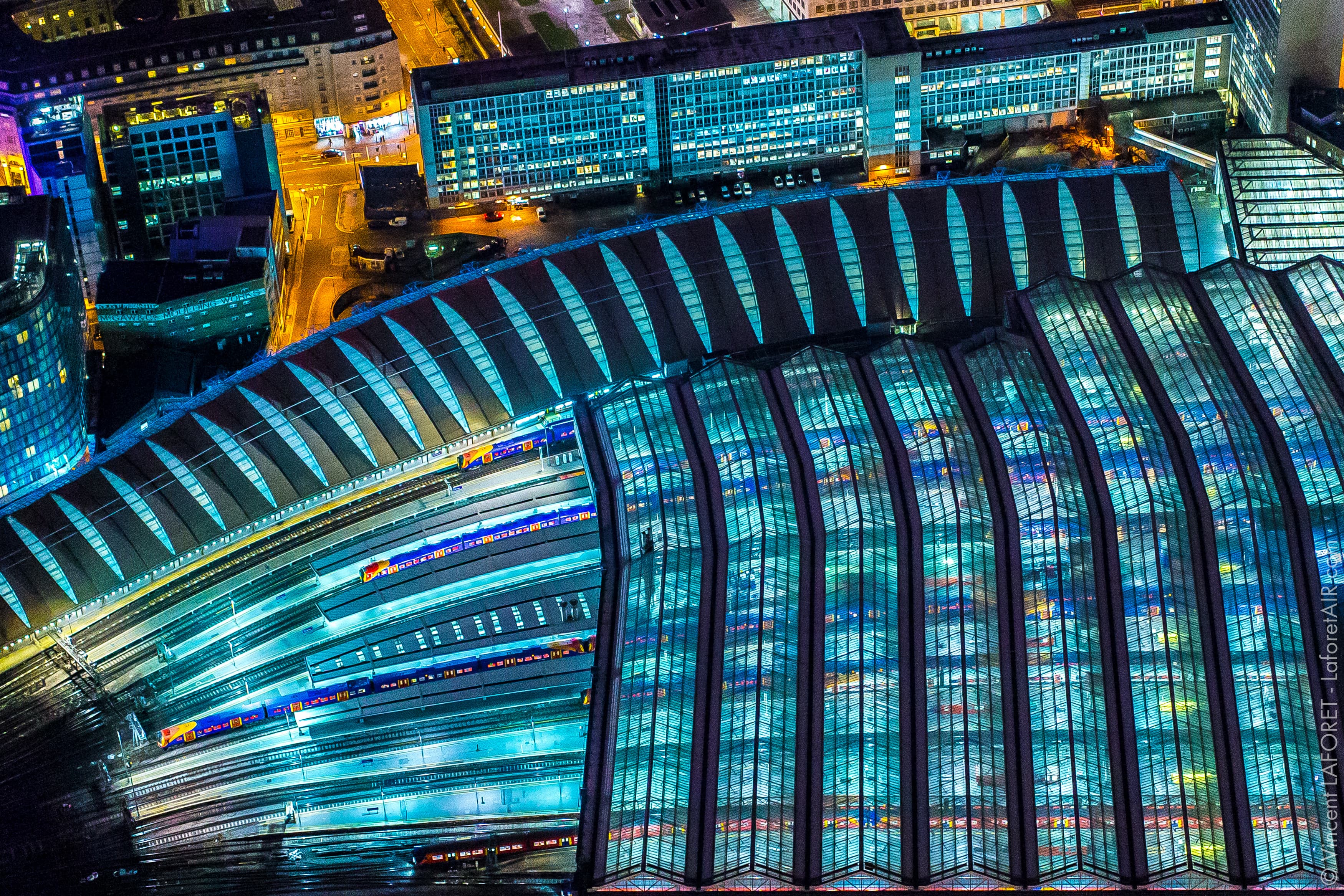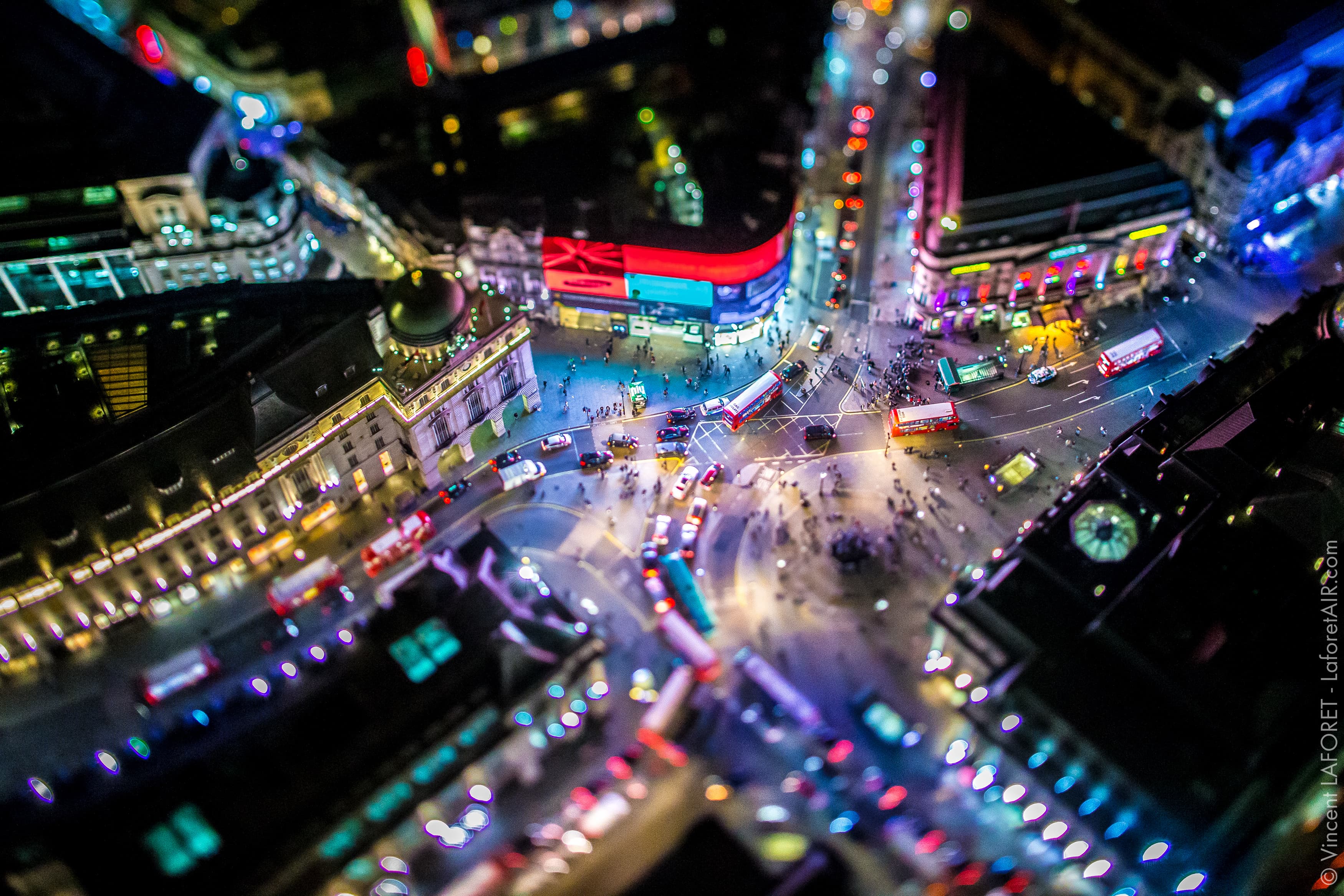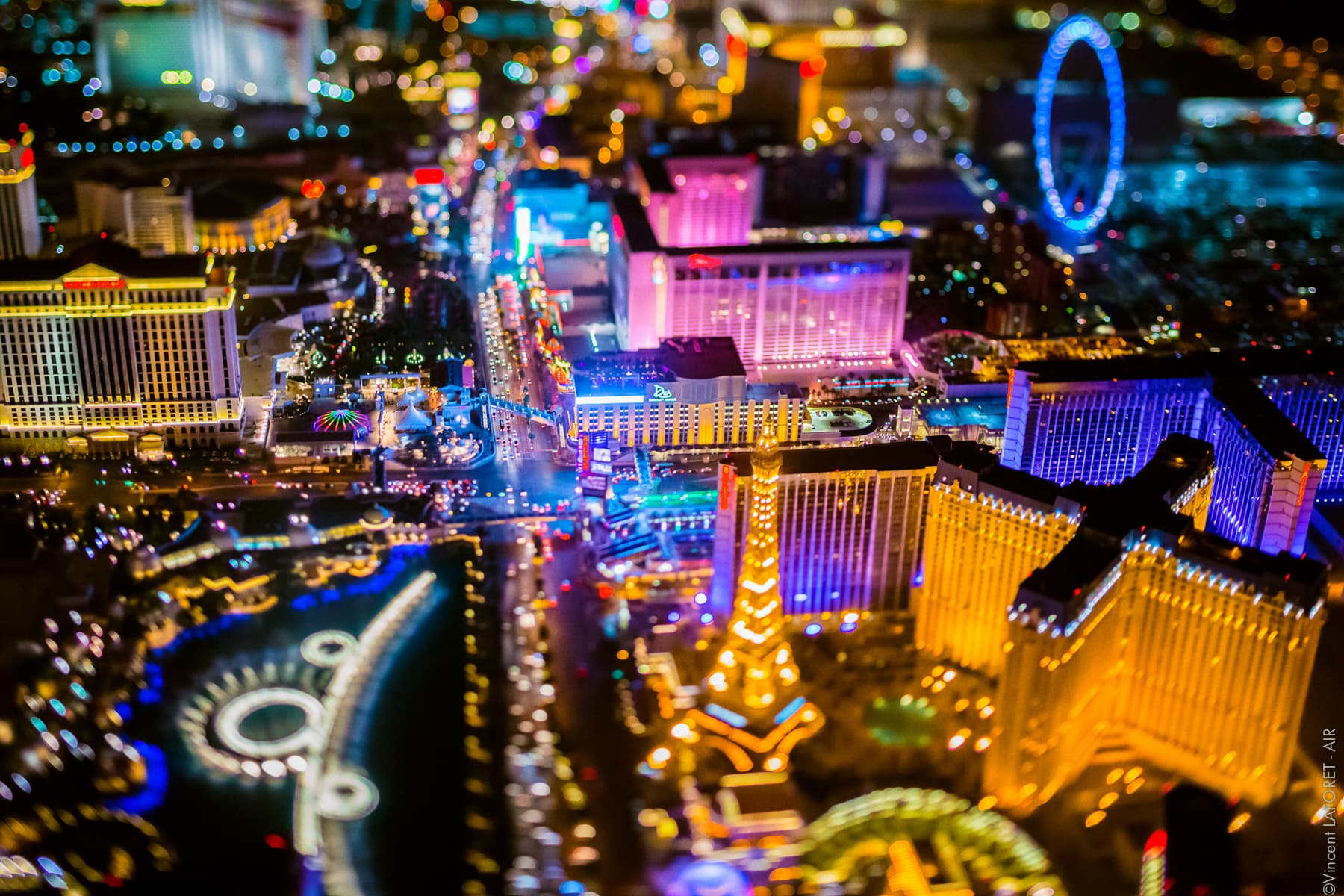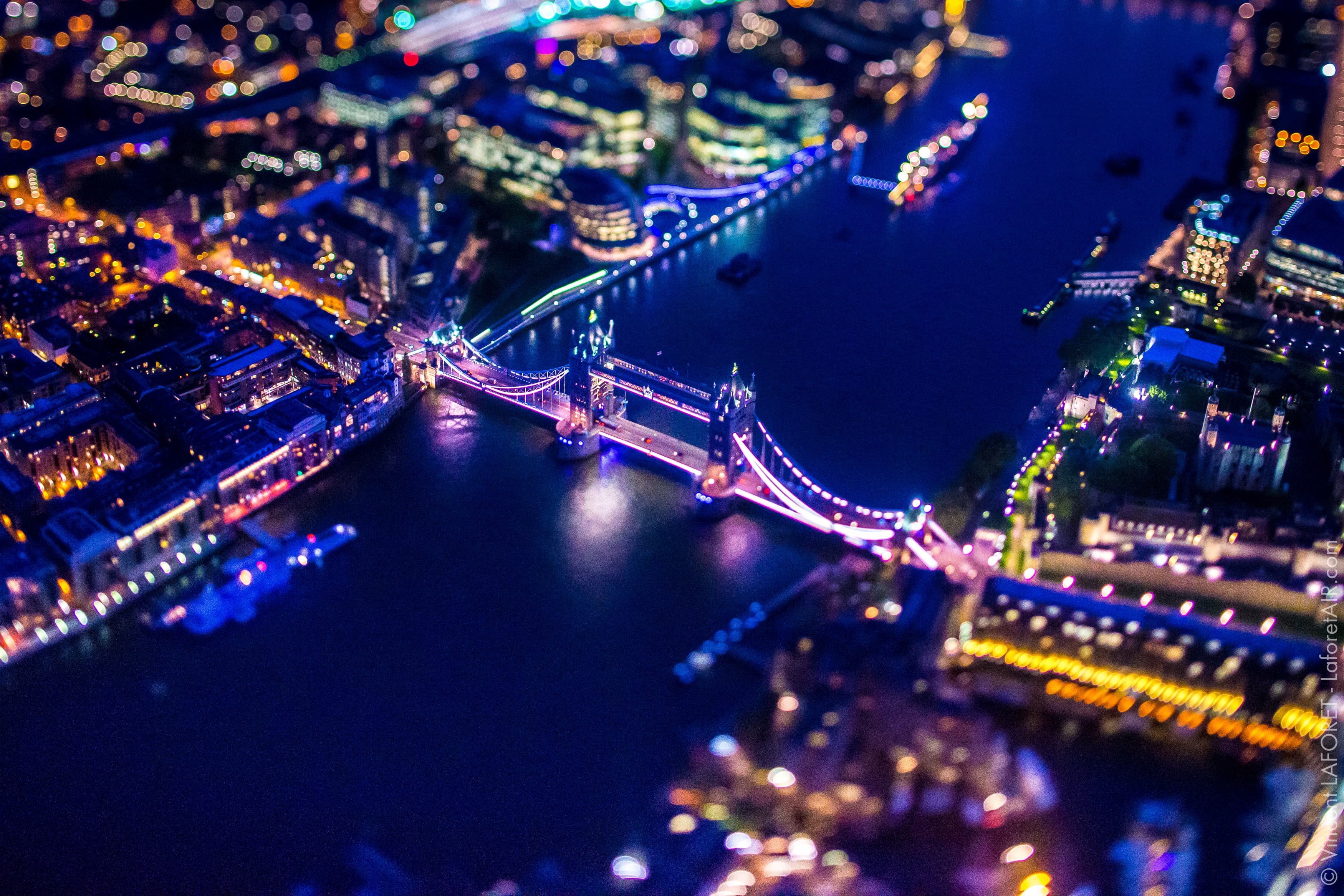
Vincent Laforet’s AIR project has most recently taken him to London. All images © Vincent Laforet/AIR
The shots on this page are brand new, but you could be forgiven for finding them hauntingly familiar.
Vincent Laforet’s AIR series – cityscapes shot from helicopters at unprecedented altitudes – have a tendency to go viral more or less every time he releases a new set, and it’s exceedingly likely that a few have graced your Facebook feed or Twitter stream.
From New York to Chicago, by way of Las Vegas and San Francisco, Vincent has flown over and photographed some of the world’s most distinctive cities, and his images have been viewed and shared by millions.
What originally started as a commission for a piece on psychology in Men’s Heath magazine has since grown and grown to become a photographic phenomenon.
Now Vincent is in London, embarking on a tour sponsored by G-Technology that will bring his distinctive style to the iconic cities of Europe, and he is soon to bring out a book of his incredible images at laforetair.com.
You can watch a video to get an idea of the behind-the-scenes process of the tour below:
https://link.brightcove.com/services/player/?bctid=4246830440001
We’ve long loved Vincent’s images here at AP, and jumped at the chance to sit down with him, moments before he set out to capture London, and find out more about the series.
Amateur Photographer: So, you’ve recently had some images displayed in New York’s Times Square, which is pretty amazing. How did that feel?
Vincent Laforet: There are very few things that get me flustered or speechless, but I was pretty dumbfounded. I mean, to see your images on the Nasdaq and on the Reuters building – which was where I had my first internship – and to see your name from the fifth floor to the twentieth… you’re like, “I could get used to this”.
I worked at the New York Times on that street and drove by the two biggest billboards every day, and to go from being an intern there in 1995 to being on the building twenty years later was a mesmerising, weird, almost out-of-body experience.
AP: I understand the New York Times was where you got your start in aerial photography?
VL: Yeah, it just kind of happened. It started with sports photography when I was in college – I had no interest in sports but could focus a manual lens, which back in the days before autofocus was a pretty rare skill. So, I fell into sports photography, even though I didn’t even know what a first down was in football [editorial note: Vincent is referring to American Football, and we don’t know what a first down is either].
And then later the New York Times sent me up in the helicopter because I had this sports photography background. In sports there’s only one touchdown, you can’t reproduce it, and it’s the same with aerial photography – you’ve only got one chance at each image, and you’re spending two or three thousand dollars an hour! But it happened, and they kept sending me up, and it eventually became a specialty.
AP: Do you thrive on that kind of pressure?
VL: Well, I’ve been dealing with pressure my entire career. Whether it’s wars, or front page pictures, or whatever, pressures come with the job. You learn to push your luck so that you get the very best image you can, down to the last minute. You calculate the time it’ll take you to get the CompactFlash card in, copy over, do a quick process, and transmit back (in the days of slow connections!) so that it hits the desk one minute before they go into the meeting!
I mean of course you’re not sadistic, if you get an amazing image two hours earlier you send it in, but then you keep on working. It’s discipline.
AP: Has learning this discipline helped your photography?
VL: I think it’s more that photography taught me a kind of discipline. I don’t like following the rules, never have, that comes from my father. A rule for me is something that is meant to be broken, and when someone tells me ‘No’ it’s the start of a conversation. I don’t accept ‘No’; I just don’t.
At the start of the AIR project started they [Men’s Health] did not like my idea at all. It was a psychology story about coincidence and the way the brain works, and I suggested that when you go up to really high altitudes the cities look like brain synapses or computer chips. But they were really indifferent and uninterested and asked me to show them an example, as they couldn’t visualise it. I said I couldn’t, because it had never been done before – that was the point!
When they did publish the story in the magazine nothing really happened with it, but then I put it on this new social media platform called Storehouse and it just exploded – 40 million views in a month. And that’s where this whole thing started.
AP: Is it a strange feeling when your images go viral?
VL: It’s happened a few times in my career, and what I’ve learned is that you can’t plan for it, you can’t predict it, it’s just like striking a nerve. These particular aerial photographs are higher than anything else I’ve done, but what I did to get them is not different to every single aerial assignment I’ve done for the past decade.
Granted there’s the altitude change, there’s no record of anyone shooting that high at night before, mostly because cameras were not capable of it until about a year ago – now there’s high enough ISOs to capture these images. It’s just the perfect marriage of timing and luck.
AP: The cities you’ve done in the past – New York, Los Angeles, Las Vegas, Chicago, San Francisco – what made you choose them?
VL: A lot of it was financially based, so all these cities except for New York were photographed in a five-day period. We did L.A., Vegas, San Francisco and Chicago in one loop and it was so exhausting – I had to take antibiotics in Chicago airport because I was near-death with a 105-degree fever. When you’re hanging out of a helicopter it can get really cold and you exhaust yourself.
But they’re also cities that mean a lot to me – New York is where I grew up, San Francisco was one of my favourite cities as a kid and still is, L.A. is where I live now, Vegas is everything I hate about humanity in one place [laughs], and Chicago is where I went to college. So they all have meaning for me.
AP: One of the defining features of the AIR series is your use of tilt-shift. What inspired you to try that?
VL: First time I shot tilt-shift in a helicopter, I did it out of boredom. I’d never seen it, and I was immediately like, “This is really cool, from the air all these things look like a miniature”.
After the project I called Canon to borrow those lenses again, and they said: “Vince, since that story you’ve published came out, these things went from gathering dust to the point where we can’t lend you any because they’re all out!” So while I definitely don’t want to claim it revived tilt-shift, I know I had some part, and I’ve been doing it ever since.
With tilt-shift, I love the fact that the effect is captured in-camera. One of the hardest things about aerial photography when you go wide-angle is that you see everything and there’s no clear focal point. Tilt-shift allows you to force the viewer to see one specific thing, as well as making it look unusual, like a toy. I love that.
AP: Can you talk us through your equipment setup and workflow when you’re up in the helicopter?
VL: I have every lens I can get, because I don’t use zoom lenses. The only zoom I use right now is the 11-24mm from Canon, which is phenomenal. Everything else is a prime lens – from 17mm, to 24mm, to 45mm and 90mm tilt-shift, and then 24mm f/1.4, 50mm f/1.2, 85mm f/1.2, 135mm f/2, and 200mm f/2.
The reason I have this armoury of lenses is that you can’t very easily tell when a helicopter might drop 500 feet, or slide this way or that. It’s a methodical process – when you have an idea, you have to communicate to the pilot that you need to go 1.2 miles north-west, five-hundred feet to your left, or turn to nine o’clock or whatever, and once they get that they then have to communicate it to the tower and get permission back.
So the time between when you ideate the image and when you shoot it can be anywhere from thirty to three minutes. So you have to be methodical, to know what you want, to pre-visualise, to have the right lens. Every image you see on this series is full-frame, not cropped, and that’s why I have all these lenses.
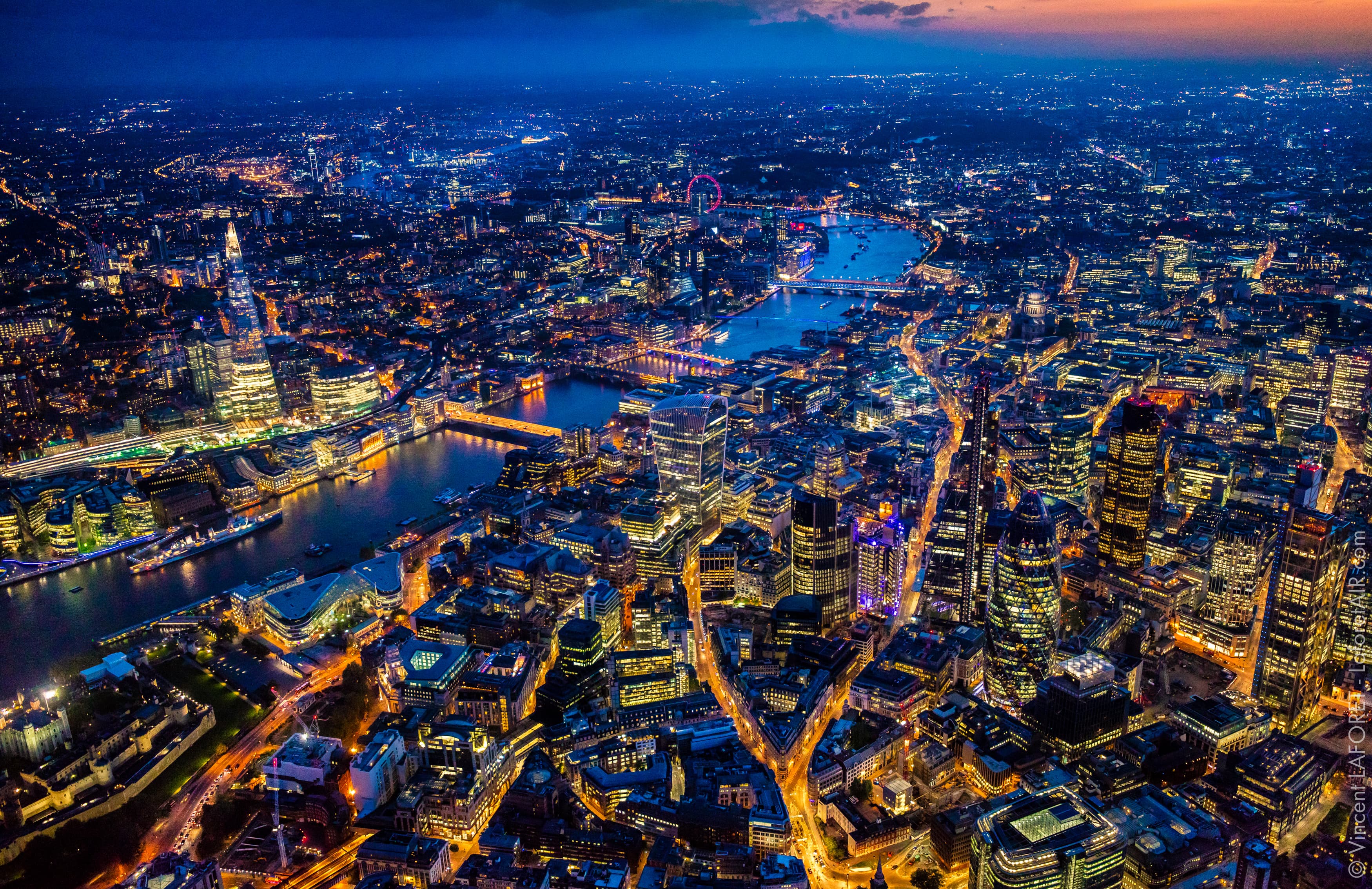
Without zoom lenses, Vincent has to communicate with his pilot to ensure his position allows him to get the shot he wants
The workflow is simple: we capture everything in the air, copy it right in the helicopter or at the heliport onto G-Tech SSDs, then we bring those back to the hotel and copy them onto G-RAID 16TB hard drives, via the G-DOCK. Then those get copied again onto ATC drives and go back to the States, and my selects go onto Dropbox synced up to the sky, back down to the Cloud and down to two G-Tech G-SPEED Studio XLs, one in New York, one in L.A.
So we’ve got seven copies of the data at the end of the day. These are such valuable images in terms of what they cost to take that you can’t lose them, so we have as much redundancy as we can.
AP: Do you see something different about a city’s character when you’re up so high?
VL: I don’t know if you see anything about the character exactly, but I definitely do my research before I go up. I try to think in the same way as a journalist about what makes this city different.
Take Vegas – it’s a spot of light in the middle of black desert, so that was my directive there. New York is all skyscrapers on a small island, San Francisco is endless rolling hills with two major bridges leading into it. L.A. was the single hardest one, because it’s just the endless expanse with no real centre.
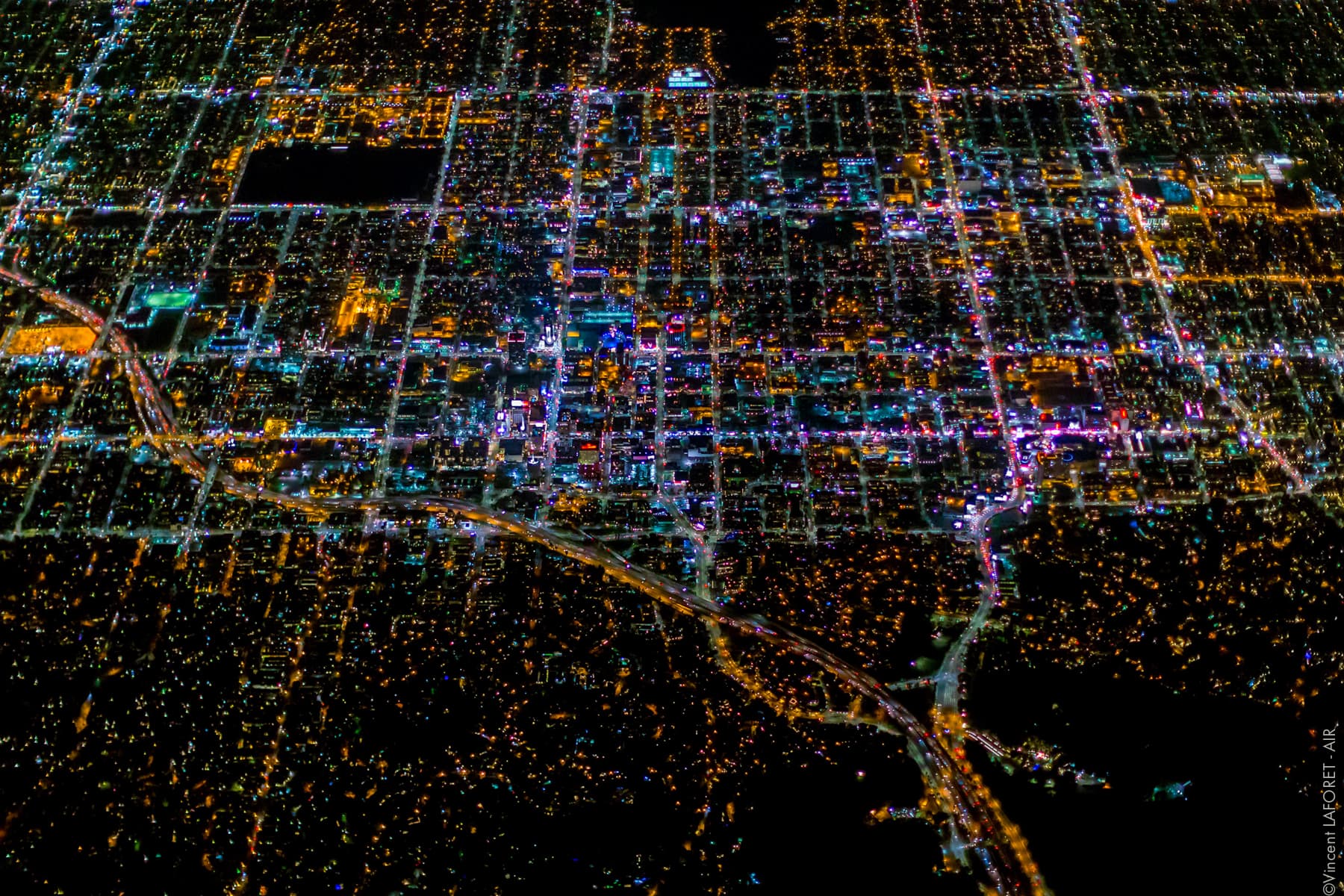
One of Vincent’s shots of Los Angeles, the city he found most difficult because of its lack of landmarks
London is very difficult, probably one of the most difficult European cities, because other than the Thames there isn’t really a connector. It’s just very expansive, and also very low. Low and flat are not your friends in aerial photography, you want vertical depth.
It’s also about geometry and pattern, which is why London is so frustrating because there isn’t much geometry or pattern. And that’s a challenge. Paris is easy; it’s on a beautiful grid system, it’s got the Eiffel tower, it’s got the Arc de Triomphe, these very clear visual icons.
London’s definitely going to be interesting, but I’ve flown over it once, and the bridges are quite beautiful and central, as is Big Ben, and the ferris wheel [the London Eye], and the egg [the Gherkin]. The pressure is on for me not just to photograph the city but to try to make iconic images that people have never seen before. To me, if I don’t accomplish that it’s a failure.
AP: One thing your series does is draw attention to just how completely urbanised these areas have been, the landscape totally transformed. Would you say there’s an environmental aspect to what you’re doing?
VL: Well there’s a big irony to it, because most successful aerial photographers shoot nature. And I love doing that too, it’s beautiful, but very few people, I think, have concentrated on making these urban landscapes beautiful.
I’ve always said that when you photograph from the air you get a literal perspective change and a figurative one, so on the literal end you see how human being react to their environment and vice versa, and in the figurative sense you have a different perspective on how we are and how we relate to one another.
When you’re in the middle of Fifth Avenue in New York City, you look up and feel utterly insignificant, powerless. When you’re up in the air though, you see that it’s not that big. From the air you don’t see people, but you see the entire construct, and the Earth feels much smaller.
There’s this weird feeling of unison, and this visceral reaction to the beauty of the metropolis. You don’t see all the dirt and garbage you would in the day, you just see the beauty of it.
AP: So what does the future hold, are you looking to shoot more cities?
VL: Yes, we’re looking to do Australia, Hong Kong and Tokyo at the end of the summer and publish the book, which should be out in October. It’ll be on laforetair.com.
G-Tech has sponsored the thing so far, which is amazing, but I can’t rely on that long-term so I need to have people continue what they’ve started, to support the project directly or indirectly by buying the book and keeping it going. I want to go to Dubai and Abu Dhabi, Rio and Santiago, all these different cities, and the only block is that it’s extremely expensive.
If people support it, it’ll keep going, it could be a multi-year project. If they don’t, then we’ve had a wonderful experience. There’s no telling.


